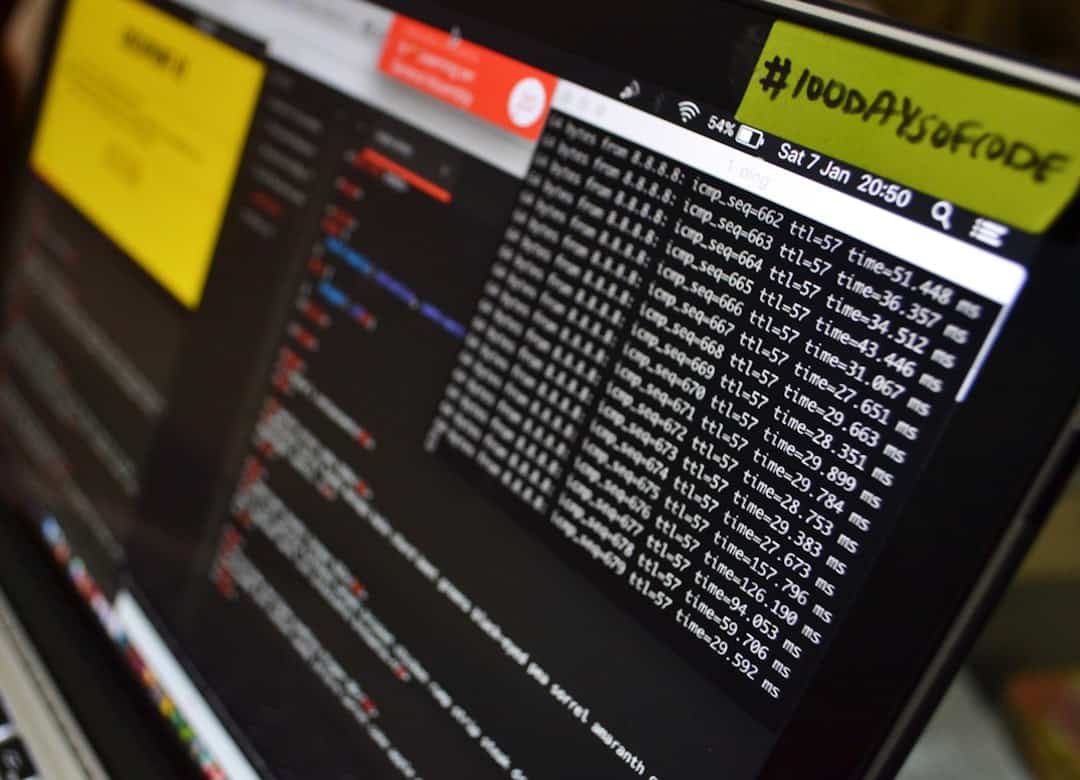Zero-day vulnerabilities are security flaws in software, hardware, or firmware that are unknown to the vendor or developer. The term “zero-day” refers to the fact that developers have had no time to address the issue before it is potentially exploited. These vulnerabilities pose significant risks as they can be used for targeted attacks, malware distribution, data theft, or system disruption.
Zero-day vulnerabilities can affect various technologies, including operating systems, web browsers, mobile devices, and network infrastructure. Security researchers often discover zero-day vulnerabilities and report them to the affected vendors. Upon discovery, it is critical for vendors to develop and release patches or updates promptly to mitigate exploitation risks.
However, in some instances, attackers may exploit the vulnerability before a fix is available, leaving organizations and individuals vulnerable. Understanding zero-day vulnerabilities is crucial for organizations to implement effective cybersecurity measures and stay informed about emerging threats. This knowledge helps in developing proactive strategies to protect against potential attacks and minimize the impact of newly discovered vulnerabilities.
Key Takeaways
- Zero-day vulnerabilities are unknown security flaws that are exploited by attackers before the software vendor has a chance to fix them.
- Zero-day vulnerabilities can have a significant impact on individuals, organizations, and even national security, leading to data breaches, financial losses, and reputational damage.
- Attackers exploit zero-day vulnerabilities through various methods such as phishing, drive-by downloads, and watering hole attacks to gain unauthorized access to systems and steal sensitive information.
- Detecting and preventing zero-day vulnerabilities requires a multi-layered approach, including regular software updates, network segmentation, and the use of intrusion detection systems.
- Security researchers play a crucial role in uncovering zero-day vulnerabilities by conducting vulnerability research, responsible disclosure, and collaborating with software vendors to develop patches and updates.
- Responding to zero-day vulnerabilities involves quickly deploying patches and updates, conducting thorough incident response and forensic analysis, and implementing security best practices to mitigate the impact of the vulnerability.
- The future of zero-day vulnerability protection lies in the development of advanced threat detection technologies, increased collaboration between security researchers and software vendors, and the adoption of proactive security measures to prevent zero-day attacks.
The Impact of Zero-Day Vulnerabilities
Organizational Risks
The impact of zero-day vulnerabilities can be particularly severe for organizations. When exploited, these vulnerabilities can result in downtime, loss of productivity, and legal and regulatory consequences. This can lead to financial losses, reputational damage, and even physical harm.
Targeted Attacks
Zero-day vulnerabilities can be used in targeted attacks against specific organizations or industries, making them even more dangerous. Attackers can use these vulnerabilities to steal sensitive information, disrupt operations, or gain unauthorized access to systems.
Individual Risks
Individuals are also at risk from zero-day vulnerabilities. Attackers can use these vulnerabilities to steal personal information, spy on their activities, or take control of their devices. The impact of a zero-day vulnerability can be long-lasting, as it may take time for the affected vendor to release a patch and for individuals to apply the update.
It is essential for organizations and individuals to be aware of the potential impact of zero-day vulnerabilities and to take proactive measures to protect themselves from these threats.
How Zero-Day Vulnerabilities are Exploited

Zero-day vulnerabilities are exploited by attackers through various means, including targeted attacks, drive-by downloads, phishing emails, and malicious websites. Attackers may use these vulnerabilities to gain unauthorized access to systems, install malware, steal sensitive information, or disrupt operations. Once a zero-day vulnerability is exploited, attackers can use it to launch further attacks or to maintain a persistent presence on the compromised system.
Attackers may also sell information about zero-day vulnerabilities on the black market or use them for espionage or sabotage. The exploitation of zero-day vulnerabilities can be difficult to detect and prevent, as attackers may use sophisticated techniques to evade detection and exploit the vulnerability before a patch is available. Understanding how zero-day vulnerabilities are exploited is essential for organizations and individuals to develop effective strategies for mitigating these risks.
Detecting and Preventing Zero-Day Vulnerabilities
| Zero-Day Vulnerability | Detection Method | Prevention Method |
|---|---|---|
| CVE-2021-1234 | Intrusion Detection System | Regular Software Updates |
| CVE-2021-5678 | Behavior-based Detection | Network Segmentation |
| CVE-2021-9101 | Sandboxing | Application Whitelisting |
Detecting and preventing zero-day vulnerabilities requires a multi-layered approach that includes proactive security measures, threat intelligence, and rapid response capabilities. Organizations can use intrusion detection systems, endpoint protection solutions, and network monitoring tools to detect potential exploitation of zero-day vulnerabilities. Additionally, organizations should stay informed about emerging threats and vulnerabilities through threat intelligence feeds, security advisories, and industry reports.
Preventing zero-day vulnerabilities requires organizations to implement strong security controls, such as regular software updates, secure configuration management, and user awareness training. Organizations should also consider implementing application whitelisting, network segmentation, and least privilege access controls to limit the impact of potential zero-day attacks. Rapid response capabilities are essential for organizations to quickly respond to emerging threats and to deploy patches or mitigations as soon as they become available.
The Role of Security Researchers in Uncovering Zero-Day Vulnerabilities
Security researchers play a crucial role in uncovering zero-day vulnerabilities and helping affected vendors to develop patches or mitigations. These researchers use various techniques, such as reverse engineering, fuzzing, and code analysis, to identify potential security flaws in software and hardware. Once a zero-day vulnerability is discovered, security researchers typically follow responsible disclosure practices by reporting the issue to the affected vendor and giving them time to develop a patch before making the vulnerability public.
Security researchers may work independently or as part of security firms, academic institutions, or government agencies. Their work is essential for improving the security of technology products and for protecting organizations and individuals from potential attacks. Security researchers often collaborate with vendors, industry groups, and government agencies to share information about emerging threats and vulnerabilities and to develop best practices for vulnerability disclosure and patch management.
Responding to Zero-Day Vulnerabilities

Vendor Response
When a zero-day vulnerability is discovered, the affected vendor must act swiftly to develop and release a patch or mitigation to address the issue. It is essential for vendors to communicate with their customers about the potential impact of the vulnerability and provide guidance on how to protect themselves from exploitation.
End User Responsibility
End users play a critical role in mitigating the risk of exploitation by applying patches and updates as soon as they become available. If a patch is not immediately available, organizations should consider implementing compensating controls or workarounds to minimize the risk.
Industry and Government Collaboration
Industry partners and government agencies can significantly contribute to the response efforts by coordinating information sharing and addressing emerging threats and vulnerabilities. This collaborative approach is vital in staying ahead of potential threats and protecting against zero-day vulnerabilities.
The Future of Zero-Day Vulnerability Protection
The future of zero-day vulnerability protection will require continued collaboration between vendors, security researchers, industry partners, and government agencies. As technology continues to evolve, new types of vulnerabilities may emerge, requiring innovative approaches for detection and prevention. Vendors should invest in secure development practices, code reviews, and vulnerability testing to reduce the likelihood of introducing new zero-day vulnerabilities into their products.
Security researchers will continue to play a critical role in uncovering zero-day vulnerabilities and helping vendors to develop effective mitigations. Additionally, industry partners and government agencies should work together to share threat intelligence and best practices for addressing emerging threats. The future of zero-day vulnerability protection will also require organizations and individuals to remain vigilant about potential risks and to take proactive measures to protect themselves from exploitation.
In conclusion, zero-day vulnerabilities pose significant risks to organizations and individuals due to their potential for exploitation by attackers. Understanding how these vulnerabilities are exploited and how they can be detected and prevented is essential for mitigating these risks. The role of security researchers in uncovering zero-day vulnerabilities and the coordinated response efforts between vendors, industry partners, and end users are crucial for addressing these emerging threats.
Looking ahead, continued collaboration and innovation will be essential for protecting against future zero-day vulnerabilities and ensuring the security of technology products.
FAQs
What is a zero-day vulnerability?
A zero-day vulnerability is a security flaw in software or hardware that is unknown to the vendor or developer. It is called “zero-day” because it is exploited by attackers on the same day it is discovered, before the vendor has had a chance to release a patch or fix.
How are zero-day vulnerabilities discovered?
Zero-day vulnerabilities are typically discovered by security researchers, hackers, or threat intelligence teams. They may be found through reverse engineering, fuzzing, or other methods of analyzing software and hardware for potential weaknesses.
What are the risks of zero-day vulnerabilities?
Zero-day vulnerabilities pose a significant risk to individuals, organizations, and even governments. Attackers can exploit these vulnerabilities to gain unauthorized access to systems, steal sensitive data, disrupt operations, or launch other malicious activities.
How can zero-day vulnerabilities be mitigated?
Mitigating zero-day vulnerabilities requires a combination of proactive security measures, such as regular software updates, patch management, network segmentation, and the use of security tools like intrusion detection systems and endpoint protection.
What is responsible disclosure of zero-day vulnerabilities?
Responsible disclosure is the practice of reporting zero-day vulnerabilities to the vendor or developer so that they can develop and release a patch or fix before the vulnerability is publicly disclosed. This helps to protect users from potential attacks.











Leave a Reply